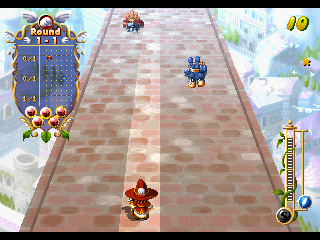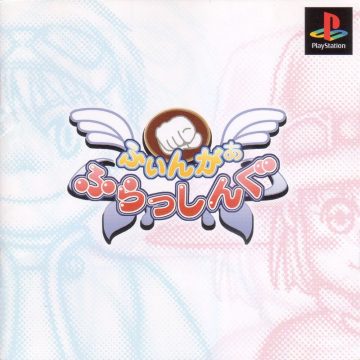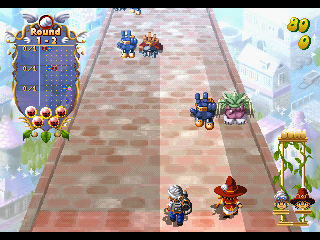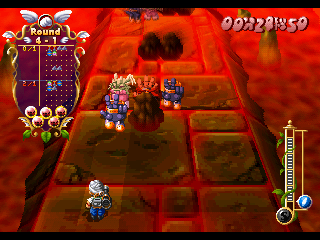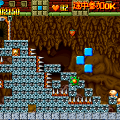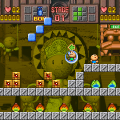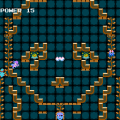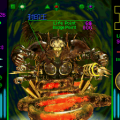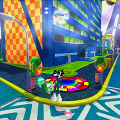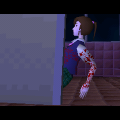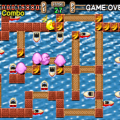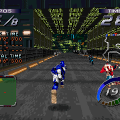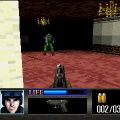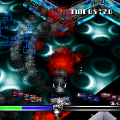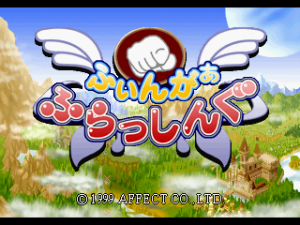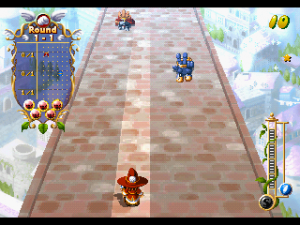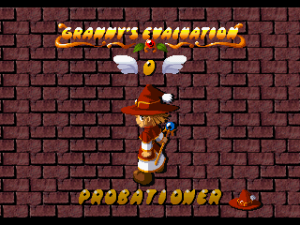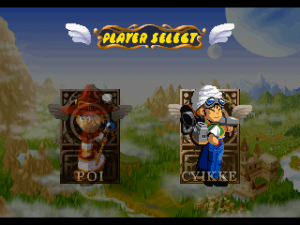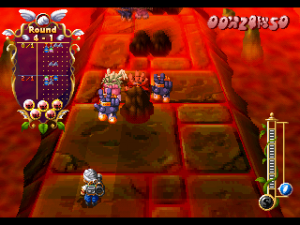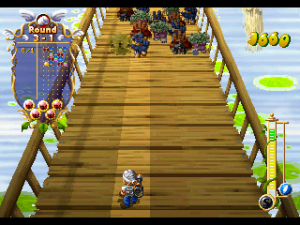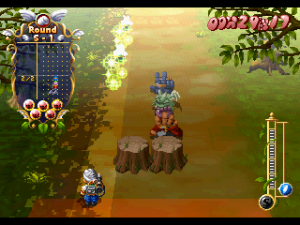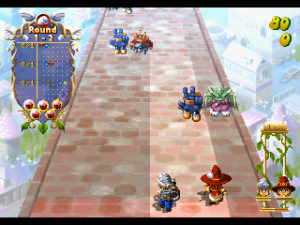Finger Flashing (ふぃんがあ ふらっしんぐ )
Developer: Affect
Release Date: 1999
Platforms: PlayStation
This article is part of our Japanese Obscurities feature. We put out a whole book about them, which is available as both a full color hardcover and a Kindle ebook from Amazon! If you’d like to see more of these features, please check out the book and if you enjoyed it, leave a five star review so we can do a follow up with even more interesting, offbeat, or historically important Japanese games!
Finger Flashing meshes rocks-paper-scissors with action-puzzle gameplay. You control one of two little wizards, Poi or Cyikke, who march forward against a legion of hand-shaped bad guys. You have three magic spells, each can destroy the associated enemy – the rock spell beats scissors enemies, scissors beat paper, and paper beats rock, of course. In the early stages, the bad guys only attack one at a time, but pretty quickly they start marching next to each other in formations. If you successfully destroy an enemy, then any enemy next to it that can be beaten by that hand sign will also be killed, setting off a combo. For example, kill a scissors enemy, and any paper bad guys next to it will die, and any rock enemies next to that one will explode, and so forth. However, if you use an ineffective spell, you’ll create an extra enemy of that type, making more work for you to deal with. When the pacing heats up, that extra split second really matters! You can also use magic to temporarily stop the enemies in place, giving you an extra moment to breathe, and can also speed up and slow down your marching speed, which determines how many points you get.In addition to a story mode, there are also score attack and time attack modes, plus a two-player co-op mode.
The best puzzle games are elegant in their simplicity, and in contrast, Finger Flashing is way too complicated. You have three buttons for each of the spells, and since the commands aren’t listed onscreen, you always need at least an extra split second to remember which spell you’re casting. There’s no margin for error either, because if a single enemy crosses the line at the bottom of the screen, you immediately lose the whole stage. Maybe some kind of lifebar would’ve been appropriate, at least in the early stages. The game has plenty of levels, but in order to make the game more challenging, some of them have shadows which obfuscate the enemy types until they get closer. It can be hard to reach the hand symbol types even at the best of times, and readability is essential in puzzle games like this. As a result, this one can only be recommended for expert puzzle game fans and (if they exist) hardcore rocks-paper-scissors fans.
